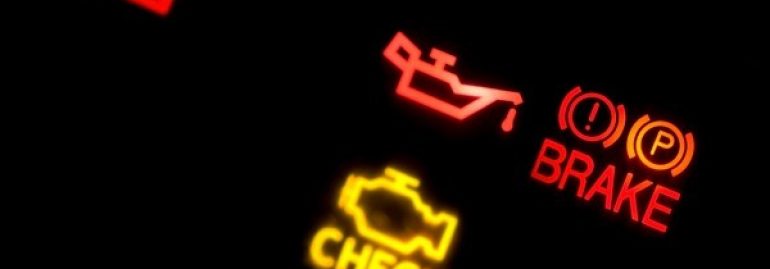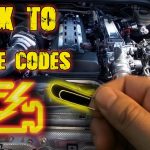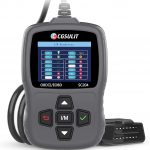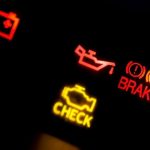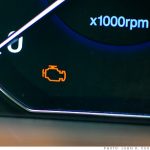In today’s modern world, environmental concerns have become an integral part of our daily lives. As we strive to protect and preserve the planet for future generations, one area that demands our attention is vehicle emissions. The check engine light has long been regarded as a dreaded indicator of potential issues with a vehicle’s emission system.
However, taking proactive measures to understand and address these problems can not only benefit the environment but also save us from costly repairs in the long run.
In this article, we will delve into effective strategies for mastering emissions and turning off that ever-persistent check engine light. From understanding the causes behind emission-related problems to implementing maintenance practices that keep our vehicles functioning optimally, we will equip you with invaluable knowledge to tackle this issue head-on.
So let’s embark on a journey towards cleaner air and efficient automobiles together!
Understanding the Check Engine Light: Decoding the Mystery
What does it mean when your check engine light comes on?
When your check engine light illuminates, it indicates that there is a problem with your vehicle’s emissions system. This can range from minor issues such as a loose gas cap to more serious problems like a faulty oxygen sensor. It is crucial not to ignore this warning because unresolved emission problems can lead to further damage and costly repairs.
How can you decode the check engine light?
- Use an OBD-II scanner: Invest in an OBD-II scanner, which can plug into your car’s diagnostic port and provide you with specific trouble codes associated with the check engine light.
- Look up trouble codes online: Research the trouble codes online or refer to your vehicle’s manual for their meanings. Each code corresponds to a particular issue within the emissions system, helping you identify what needs fixing.
- Consider professional help: If you are unsure about interpreting trouble codes or lack expertise in automotive repairs, consult a qualified mechanic who can diagnose and fix any emerging issues efficiently.
Understanding what triggers the check engine light and being able to decode its message empowers you to take appropriate action promptly, ensuring smooth-running performance and prolonging the life of your vehicle.
Diagnosing Emission System Issues: A Step-by-Step Guide
Step 1: Check for Loose or Damaged Gas Cap
First, inspect your gas cap. A loose or damaged gas cap can cause the check engine light to turn on. Ensure that the cap is securely tightened and in good condition. If it’s loose or damaged, replace it with a new one.
Step 2: Scan for Diagnostic Trouble Codes (DTCs)
Use an OBD-II scanner to scan for diagnostic trouble codes (DTCs). This device will connect to your car’s onboard computer and retrieve any stored error codes related to the emissions system. Make note of these codes as they will help you pinpoint the issue.
Step 3: Research DTCs
Once you have retrieved the DTCs, research their meanings online or consult a repair manual specific to your vehicle’s make and model. Understanding the meaning behind each code will give you insight into what could be causing your emission system issues.
Step 4: Inspect Vacuum Lines and Hoses
Inspect all vacuum lines and hoses connected to your vehicle’s emissions system. Look for signs of wear, cracks, or disconnections. Tighten any loose connections and replace any damaged components as necessary.
Step 5: Check Oxygen Sensors
Oxygen sensors play a crucial role in monitoring exhaust gases entering and exiting your engine. Use a multimeter to test each oxygen sensor individually for proper voltage output. If faulty readings are obtained during testing, consider replacing them accordingly following manufacturer guidelines.
Remember, if at any point during this process you’re unsure about how to proceed or diagnose an issue properly seek professional assistance from certified mechanics who specialize in emission systems troubleshooting.
Effective Strategies for Repairing Emission System Problems
- Identify the Issue: When the check engine light illuminates, it’s crucial to determine the specific problem triggering it. Utilize a diagnostic tool or visit an auto repair shop for a thorough diagnosis.
- Inspect and Replace Faulty Components: The emission system consists of several components such as oxygen sensors, catalytic converters, and fuel injectors. If any of these parts are defective or worn out, they must be inspected and promptly replaced.
- Regular Maintenance is Key: Regularly maintaining your vehicle plays a vital role in preventing emission system issues from occurring in the first place. Complete routine tasks like changing oil, replacing filters, and ensuring proper gasoline usage.
- Fix Vacuum Leaks: Vacuum leaks can cause misfires and affect exhaust gas recirculation (EGR) systems’ functionality—inspect vacuum hoses for cracks or loose connections regularly to prevent this issue.
Maintaining and Preventing Emission System Issues: Best Practices for Vehicle Owners
Regular Maintenance and Inspection
- To prevent emission system issues, it is crucial for vehicle owners to follow a regular maintenance schedule. This includes changing the oil and oil filter, replacing air filters, checking spark plugs, and ensuring proper tire pressure.
- Conducting routine inspections of the emission control components can help identify potential problems before they escalate. It is advisable to examine the oxygen sensors, catalytic converter, evaporative emissions canister and valve, as well as any hoses or lines connected to these parts.
Fuel Quality Matters
- Using high-quality fuel is essential in maintaining a healthy emission system. Opt for fuels that have been tested and certified by reputable organizations such as TOP TIER™ brands.
- Additionally, avoid diluting fuel with additives or other substances that may harm the engine or contribute to increased emissions.
Efficient Driving Habits
- Practicing efficient driving habits not only helps reduce fuel consumption but also minimizes harmful emissions. Avoid aggressive acceleration or braking maneuvers whenever possible.
- Keep speed within limits and use cruise control on highways when appropriate. Idling for extended periods should be avoided whenever possible; instead shut off the engine if you anticipate being stationary for more than 30 seconds.
By incorporating these best practices into your regular vehicle maintenance routine, you can significantly mitigate potential emission system issues while doing your part in reducing environmental pollution caused by vehicle emissions.


